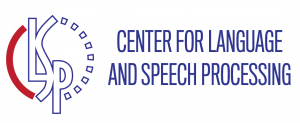Resource demands and sentence complexity – Edward Gibson (Department of Brain and Cognitive Sciences/Department of Linguistics and Philosophy, MIT)
View Seminar Video
Abstract
Why is sentence (1) so much harder to understand than sentence (2)? The student who the professor who the scientist collaborated with had advised copied the article. The scientist collaborated with the professor who had advised the student who copied the article. The two sentences have very similar meanings, yet (1) is far more complicated than (2). In this presentation, I will present evidence from my lab for two independent factors in sentence complexity at play in sentences like (1) and (2) (Gibson, 1998, 2000): Integration distance between syntactic dependents. The processing cost of integrating a new word w is shown to be proportional to the distance between w and the syntactic head to which w is being integrated. The syntactic dependents in (1) are generally much further apart than they are in (2), making (1) more complex. Syntactic storage in terms of the number of partially processed syntactic dependents. Our evidence suggests that complexity increases as the number of predicted syntactic dependents increases. This factor also predicts greater complexity for (1) relative to (2). Evidence for these two factors will be provided in the form of reading times and comprehension questionnaires across a variety of English (Grodner & Gibson, 2002), Japanese (Nakatani & Gibson, 2003) and Chinese (Hsiao & Gibson, 2003) materials. Furthermore, recent evidence will be presented which helps to distinguish how distance is quantified, in terms of discourse structure (Warren & Gibson, 2002) and/or interfering similar syntactic elements (Gordon et al., 2001).
Biography
Biographical information can be found here.


